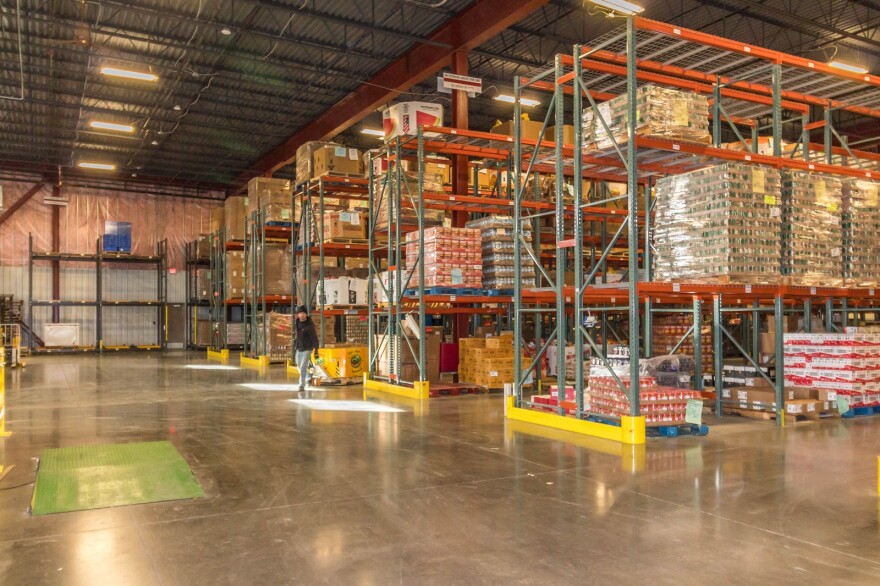With recent price increases across the country, more and more South Dakotans are turning to food assistance programs. This influx in need, however, is putting a strain on organizations like Feeding South Dakota.
Feeding South Dakota is an organization that provides food assistance programs across the state. The organization’s programs include the Food Bank Program that stores and distributes donated food, mobile and fixed-point food pantries, child hunger programs like the BackPack Program, and The Senior Box Program for people 60 and over with limited incomes.
Stacey Andernacht, marketing and communications director for Feeding South Dakota, said the organization has seen a 20% increase in use at mobile food distribution sites. That's happening alongside a U.S. consumer inflation rate of 9.1 percent, the highest in four decades.
“So that’s definitely telling us that the current prices in our economy have been impacting families in a way that they are looking for resources to help make ends meet,” Andernacht said.
Feeding South Dakota has seen a 33% increase at its Rapid City distribution center, a 28% increase at its Sioux Falls center and a 13% increase at its Pierre center.
Recent data from Feeding America also showed that Oglala Lakota County had the highest rate of people experiencing food insecurity in the state at 27.7%, based on 2020 data. This is 154.1% higher than the national average.
This increase in demand for Feeding South Dakota’s services has meant the organization needs more food, but getting extra supplies has been a challenge.
“We’ve been feeling that supply chain pinch for a little while, just the accessibility of the food,” Andernacht said. ”And being a state that’s located in the center of the nation, that’s an additional challenge for us, because it’s a little more difficult to get trucks to come to the center of the nation.”
Feeding South Dakota also gets food from other food banks and organizations in the region that have excess supply.
“So there’s a member market, and we can acquire that donated food, but there’s less of that available now because so many food banks are seeing an increase, and they’re needing to utilize what they would have made available,” Andernacht said.
This also impacts the nearly 200 agency partners, or local community food drives and meal sites, that rely on food distributions from Feeding South Dakota.
To combat these increased demands, the organization has had to buy excess supplies using its own money. In July, Feeding South Dakota met its monthly budget for purchasing food by July 12, according to a press release from the organization.
Though Andernacht said the group will not run out of food anytime soon, she added the best way for people to help support Feeding South Dakota is by donating money to help purchase more supplies.
“We have just the ability through our purchasing power to acquire foods at a better rate than the average consumer can,” she said. “Also, the quantity of food that we need is large.”
For people wanting to donate food, Feeding South Dakota has its most needed food items listed on its website. The top four most needed items are canned vegetables and fruits, peanut butter, boxed meals and canned proteins like tuna, chicken and beans.
People can also donate their time by volunteering at distribution centers to help package food for mobile food pantries and other agency partners.
Andernacht said this support helps not only the organization, but all of the communities it supports through its programs.
“It takes a whole community to fight hunger in our state, and we’re proud to work with everybody, but it’s really about making sure that people who are in a situation right now where they’re not sure where their next meal is going to come from can get the food that they need,” she said.


